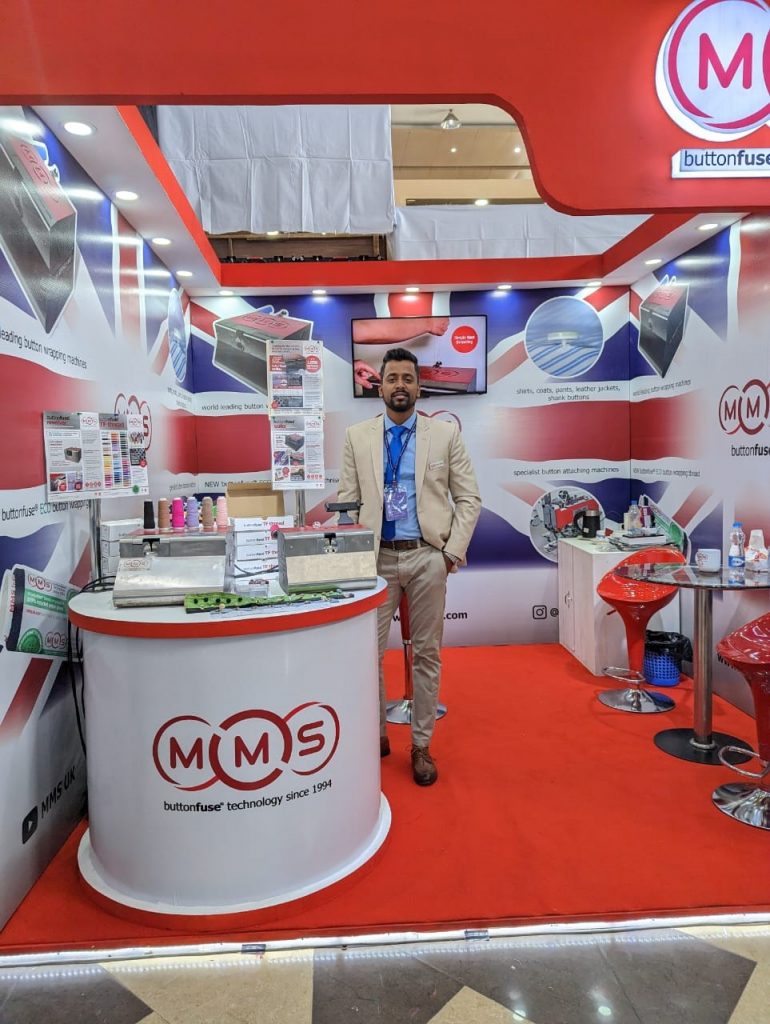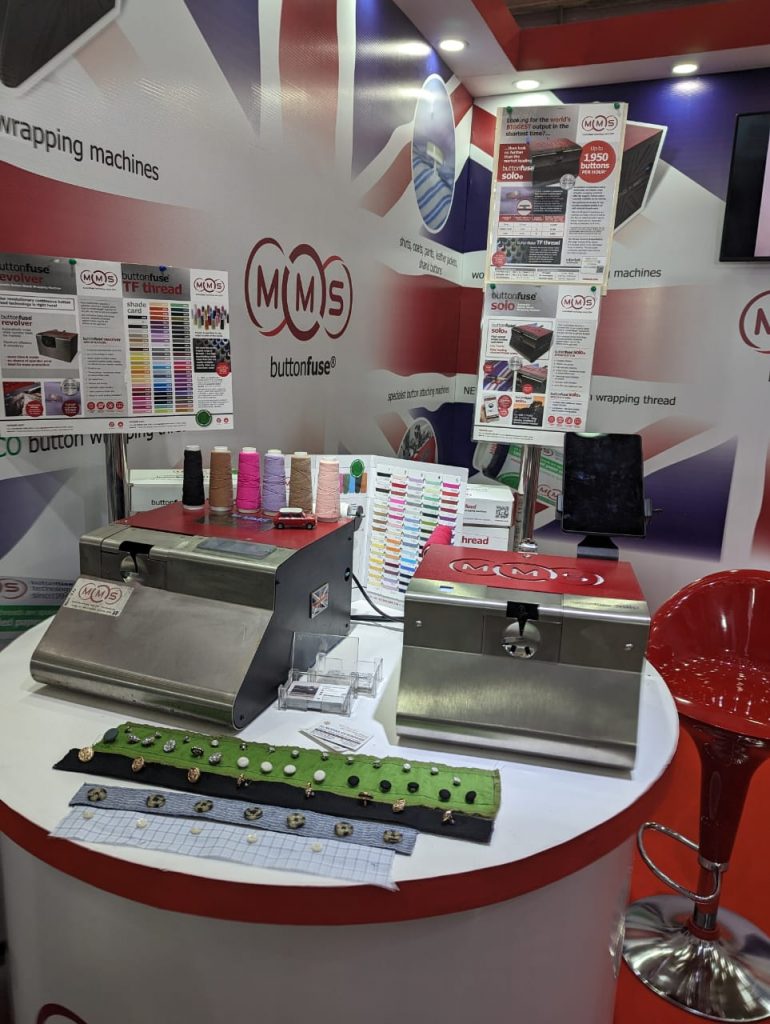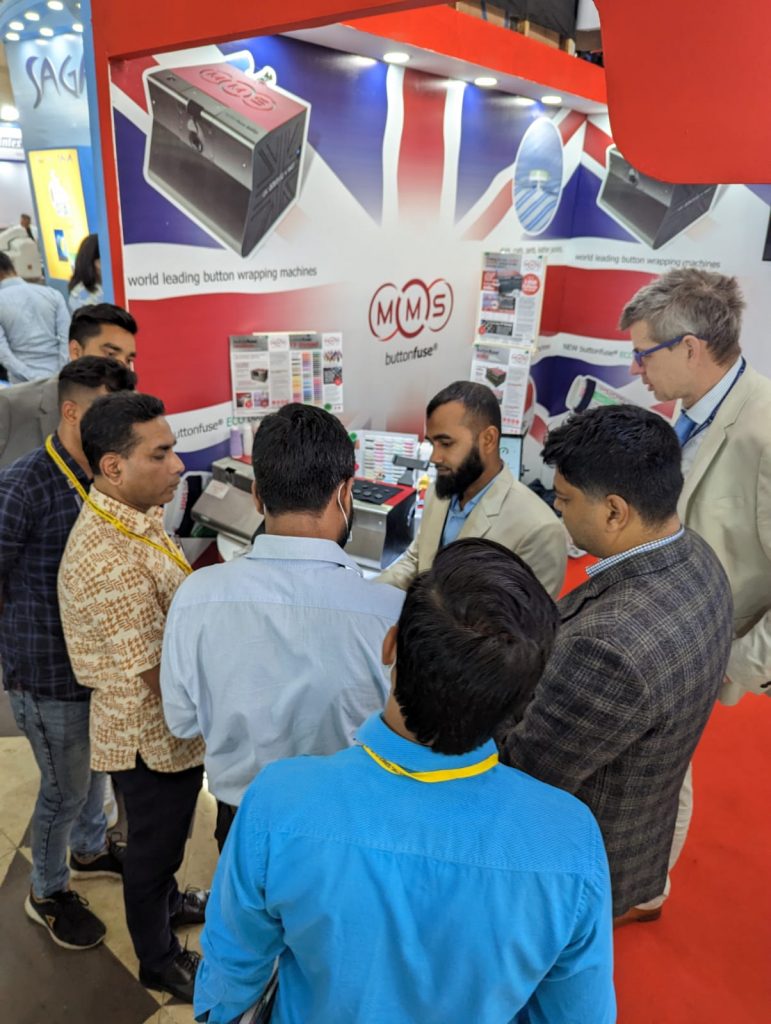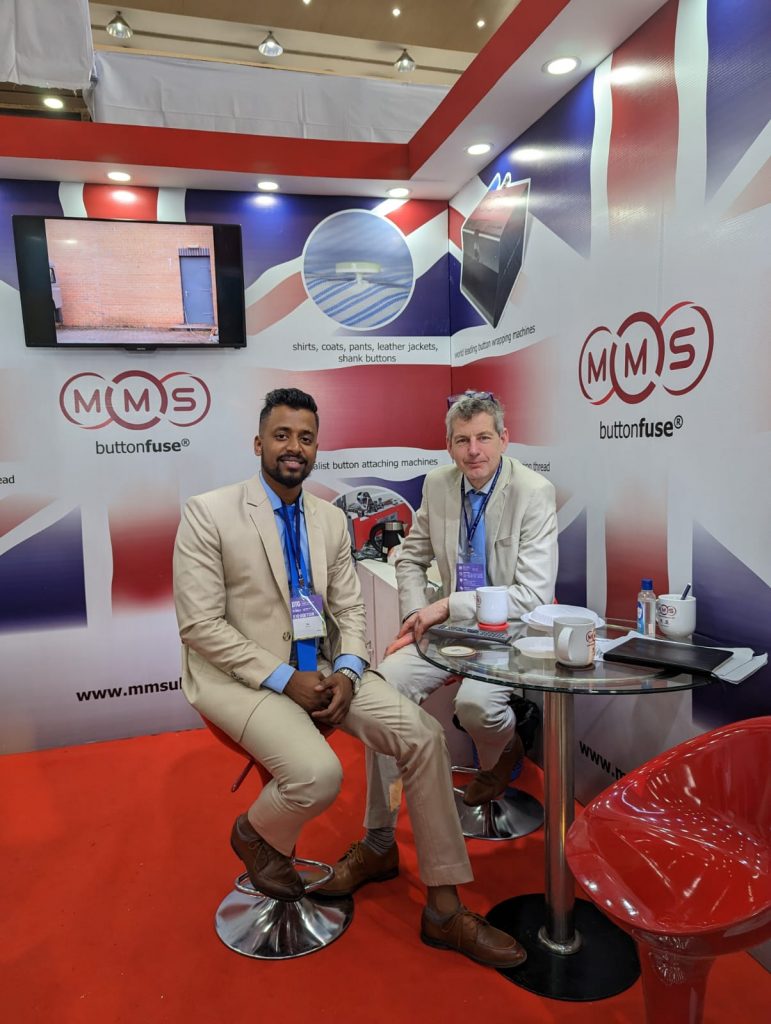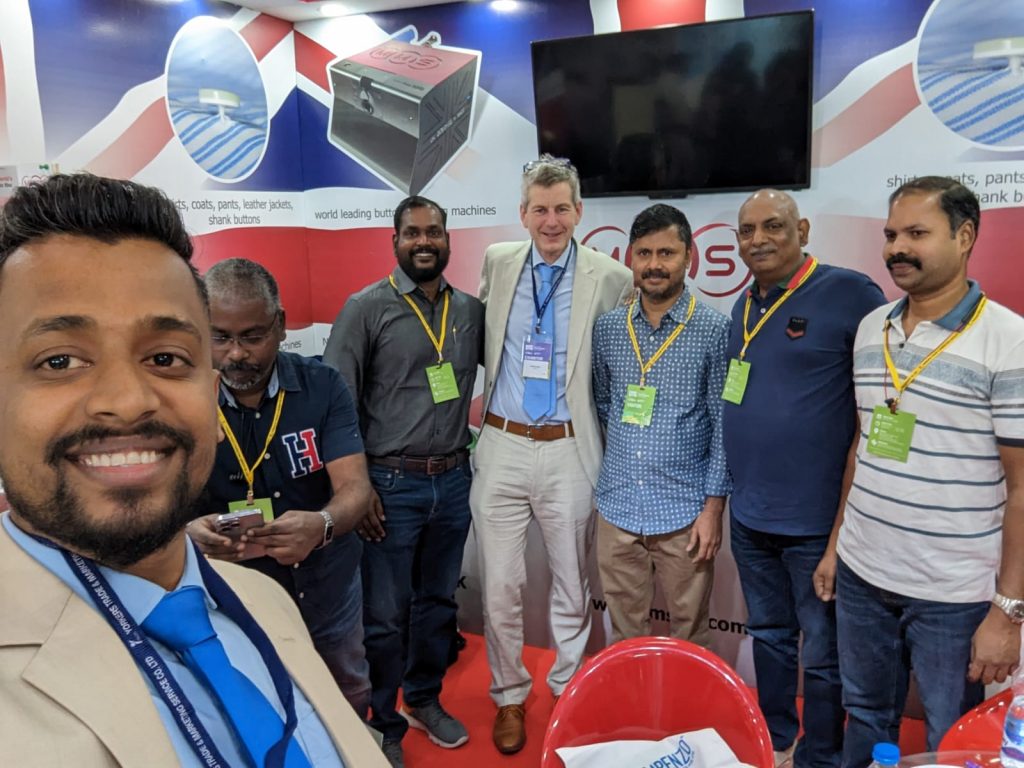Wrapping up another fantastic week in Germany with some photo highlights from the show.
Our full range of button wrapping machines were on display including the buttonfuse solo, buttonfuse classic (a.k.a MK11), and buttonfuse mini (a.k.a MK6). We were also very excited to officially launch the buttonfuse revolver, a super fast button wrapping machine designed specifically for shirts and blouses.
With all of our machines we recommend using MMS heat sealing TF thread which is now spooled on recyclable cardboard cones with the new MMS buttonfuse branding. Spot the ‘tree of thread’ below showing the full colour range.
A huge thanks to everyone who made the effort to visit us. We hope you enjoyed it as much as we did!
















